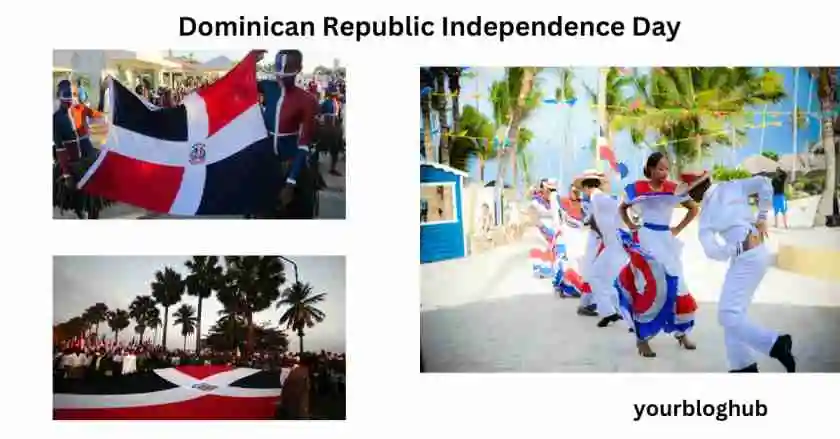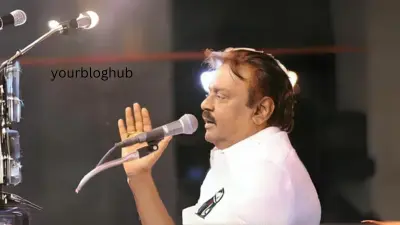Dominican Republic Independence Day
Table of Contents
Prepare yourself to celebrate the Dominican Republic’s vibrant culture and rich history on February 27, which is also known as Dominican Republic Independence Day!
This day was when the country gained its independence from Haiti in 1844। It is the time when Dominicans from all over the world gather to celebrate their heritage through music, dance, food, and celebrations।
There are a lot of ways to join in on the celebration and experience the unique spirit of this Caribbean nation, from traditional parades to lively street parties। Let’s raise our flags high and celebrate this special day with pride and joy!

How Dominican People Celebrate Their Independence Day?
Although February 27th is the annual date of the Dominican Republic’s Independence Day celebration, the entire month of February is referred to as “Patriotism Month.” Juan Pablo Duarte, a founding father and national hero, is celebrated on January 26th, when festivities begin.
Dominicans celebrate their history, culture, and tradition all month long. The clever twist is that they incorporate Carnival into their Independence Day celebrations since it falls within the same month, making it one of the world’s most distinctive Independence Day celebrations.
On February 27, Dominicans honor their founding fathers in Santo Domingo’s Puerta del Conde, the president delivers a speech that is televised to the entire country, people fly Dominican flags from their balconies, and they eat traditional foods like mangu and bacalao.
Lastly, every town in the nation celebrates “Carnival style”; nonetheless, La Vega, a city 120 kilometers north of Santo Domingo, is the center of this celebration. Here, the festive mood and patriotic pride of Dominicans mix to produce a celebration of legendary proportions.
The History of Dominican Republic’s Independence Day
The history of the Dominican Republic’s independence movement is among the most remarkable and complex in the Americas.
To begin with, the Dominican Republic is one of the select few nations in the world that has successfully battled for and attained two separate identities. once in 1821 from Spain and again in 1844 from Haiti. Every February 27th, Dominicans celebrate their second national holiday since it marks the beginning of the Independence War against the Haitian government in 1844 by a secret society known as La Trinitaria, or “The Trinity.”
Still, that isn’t all. Since the time of Christopher Columbus, the island that is now separated into the Dominican Republic and Haiti has been known by the Spanish as La Hispaniola.
It was the first Spanish outpost in the Americas, and during the first 100 years of Spanish administration, its significance increased.
Nevertheless, this situation changed when gold was discovered in Mexico and Peru. The French captured the western portion of the island (Haiti) from the Spaniards by 1697, and the entire island by 1795.
The eastern part of the island was retaken by the Spanish by 1814, but they soon lost it again as a result of the Dominic Republican’s first successful independence and subsequent aspiration to become a part of the Republic of Gran Colombia. However, this project was never completed, and Haiti took control of the entire island in 1822.
Before the Dominicans achieved complete independence on February 27, 1844, Haiti held control for 22 years.
If you followed closely, you’ve noticed that over the last 500 years the Dominican Republic was under the rule of Spain, France, Spain again, and Haiti. It seems sense that every year, the Dominican people celebrate their independence for a full month.
The National Symbols of the Dominican Republic
The flag, coat of arms, and national song of the Dominican Republic are considered to be its national symbols. Let’s find out more details about each of them:
- The Flag:As with most Latin American countries, the national flag of the Dominican Republic was formed during their battle of independence. It makes sense, since the notion of new states swept the continent at that time.
Concepción Bona and Maria Trinidad Sanchez, two ladies, designed the flag, which was Juan Pablo Duarte, the national hero of the Dominican Republic,’s inspiration. The first flight occurred in 1844.
The flag’s design features four rectangles in dark blue and red, as well as a white cross in the center, similar to those used in other Christian countries like Switzerland and Scotland. The Dominican Coat of Arms is displayed in the middle of the cross.
- The Coat of Arms:The official Coat of Arms of the Dominican Republic was created by politician Casemiro Nemesio de Moya. It consists of a shield with the flag’s colors—blue, red, and white—six spears, a yellow cross, and a Bible with the passage “Y la verdad os hará libres” (And the truth shall make you free).
On either side of the shield are a palm frond and a branch of laurel. The nation’s motto, Dios, Patria, Libertad (God, Fatherland, Liberty), is displayed above the shield and below it in yellow on a crimson ribbon.
- The National Anthem: Jose Rufino Reyes y Siancas wrote the melody and Emilio Prud’Homme wrote the lyrics for the national anthem of the Dominican Republic in 1882. But political squabbling prevented it from being formally accepted until 1934.
The anthem is notable for not using either the Spanish name for the Dominican Republic, República Dominicana, or the Spanish demonym for the Dominican people, dominicanos. Nonetheless, the island’s native term, quisqueya, as well as its demonym, quisqueyanos, appear multiple times. This reflects the anti-Spanish sentiment of the age, when most newly independent nations in Latin America saw Spain as a threat and their enemy.
How does the Dominican Republic celebrate their Independence Day?
Regardless of the Lenten calendar, Carnival celebrations take up the entire month of February, with National Independence Day falling on February 27 and the birthday of the country’s founding father, Juan Pablo Duarte, on January 26. Every Sunday throughout the month of the Dominican Republic’s independence is marked by customary parades.
What is the Dominican Republic known for?
Although the Dominican Republic is mostly known for its beaches, there is much more to this Caribbean country. You will always be surprised by this place, from its stunning cities to its untamed interior. The island offers some of the best rums in the world along with a rich cuisine if you enjoy eating and drinking.
What religion is in the Dominican Republic?
A 2020 Latinobarometer study shows that 52.5 percent of people identify as Catholic, down from 55.5 percent in a 2016 survey and 68 percent in 2008. Compared to 12% in 2008, the 2020 study found that over 21% of people identify as evangelical Protestants.
What language is spoken in Dominican Republic?
The majority language spoken by Dominican Republic residents is Spanish. Dominican Spanish is the local dialect of Spanish; it is similar to other Spanish dialects spoken around the Caribbean. It is comparable to Spanish from Canary Islands.
What sport is most popular in Dominican Republic?
In the Dominican Republic, baseball has traditionally been the most popular sport, followed by sports like basketball, volleyball, and tennis.



